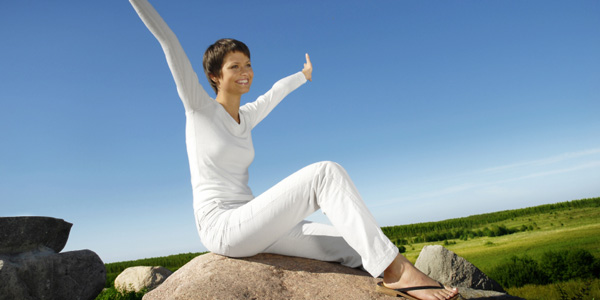A road to a healthier back is an on-going process. Here are some quick tips you can use everyday to prevent back pain in the future.
Don't lift heavy objects. Lifting heavy objects, especially if done improperly, can increase the strain on your back resulting in acute back pain, muscle strains, and/or disc herniations. Lift with your knees and not with your back, keeping the object as close to you as possible. No twisting should be done while lifting. Be very cautious when helping others transfer and ask for assistance.
Stretch before activity. It is vital to stretch before any physical activity or strenuous activities. As we age, stretching becomes more important as our ligaments and tendons tighten. Yoga or pilate sessions can help improve flexibility.
No slouching allowed. Slouching while seated or standing shifts your center of gravity forward in front of your spine, thereby increasing the strain and pressure in your back and discs. Our mothers were right- stand up straight and sit up straight.
Sit in the right chair. While at work or at home, sit in a chair with good low back support and one that is of appropriate height and position that reduces your tendency to slouch. Lumbar contoured chairs or a towel rolled up in the lower part of your back can help provide lumbar support.
Walk around frequently. While at work or home, do not remain seated for a prolonged amount of time. Periodically, change sitting position and/or walk around stretching your neck and back.
Comfortable shoes are a must. Comfortable shoes, with arch support and low heels are ideal. If you do a lot of standing or walking, consider shoes with 1/2 inch heels (for men and women) and some form of arch support. Shoe lifts should only be worn if one leg is shorter than the other.
Stop smoking. Smoking and nicotine reduces micro-blood circulation to your lower back and entire body. This reduction increases the rate of disc degeneration thereby causing back pain.
Maintain a low body weight. It is never too late to lose those few pounds you have been meaning too. Reduction in weight improves back biomechanics and diminishes the strain on your bones and muscles.
Aerobic activity. Low impact-type, aerobic activities are ideal such as swimming, biking, fast walking, and/or elliptical. Research studies for many years have shown aerobic activity of any type reduces back pain.
REFERENCES
(1) Horton SJ, Johnson GM, Skinner MA. Changes in head and neck posture using an office chair with and without lumbar roll support. Spine (Phila Pa 1976). 2010 May 20;35(12):E542-8.
(2) Lambeek LC, van Mechelen W, Knol DL, Loisel P, Anema JR. Randomised controlled trial of integrated care to reduce disability from chronic low back pain in working and private life. BMJ 2010;340:c1035
(3) Yang EJ, Park WB, Shin HI, Lim JY. The effect of back school integrated with core strengthening in patients with chronic low-back pain. Am J Phys Med Rehabil. 2010 Sep;89(9):744-54.
(4) Shirado O, Ito T, Kikumoto T, et al. A novel back school using a multidisciplinary team approach featuring quantitative functional evaluation and therapeutic exercises for patients with chronic low back pain: the Japanese experience in the general setting. Spine 2005;30:1219–25.
(5) Henschke N, Ostelo RW, van Tulder MW, Vlaeyen JW, Morley S, Assendelft WJ, Main CJ. Behavioural treatment for chronic low-back pain. Cochrane Database Syst Rev. 2010 Jul 7;(7):CD002014. Review.
(6) Waters TR. Introduction to ergonomics for healthcare workers. Rehabil Nurs. 2010 Sep-Oct;35(5):185-91. Review.

